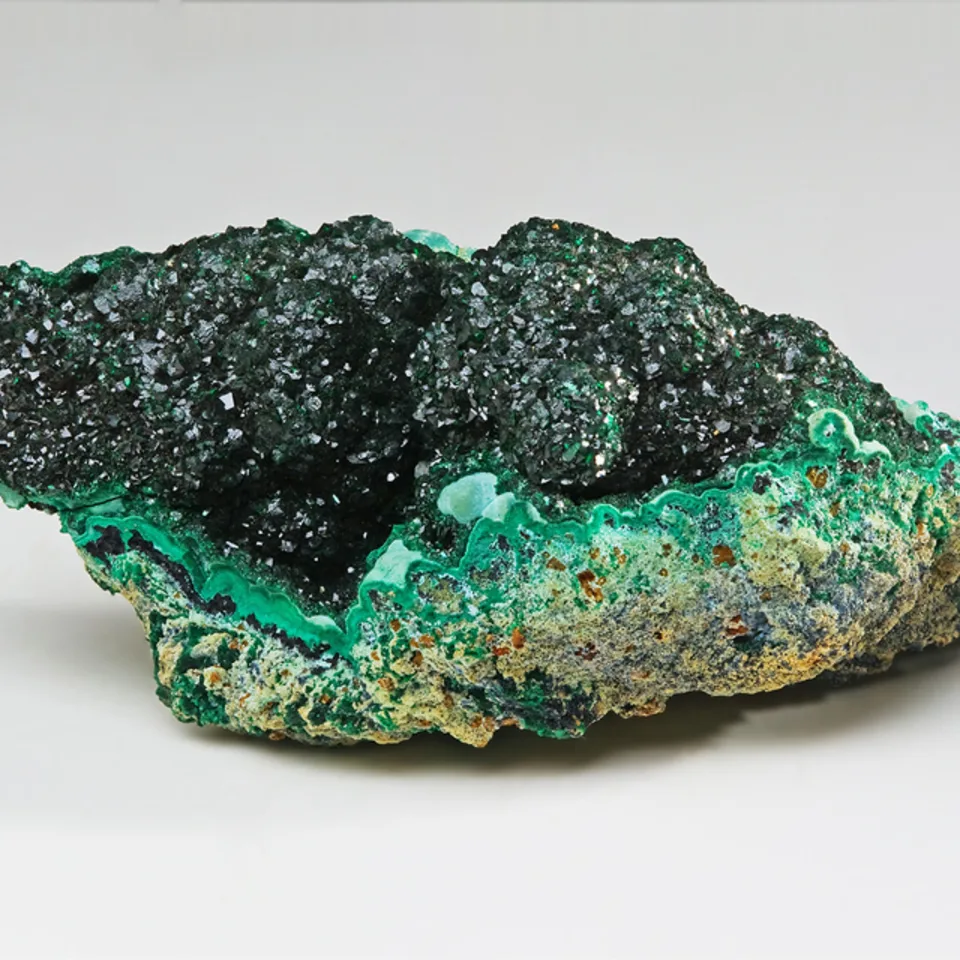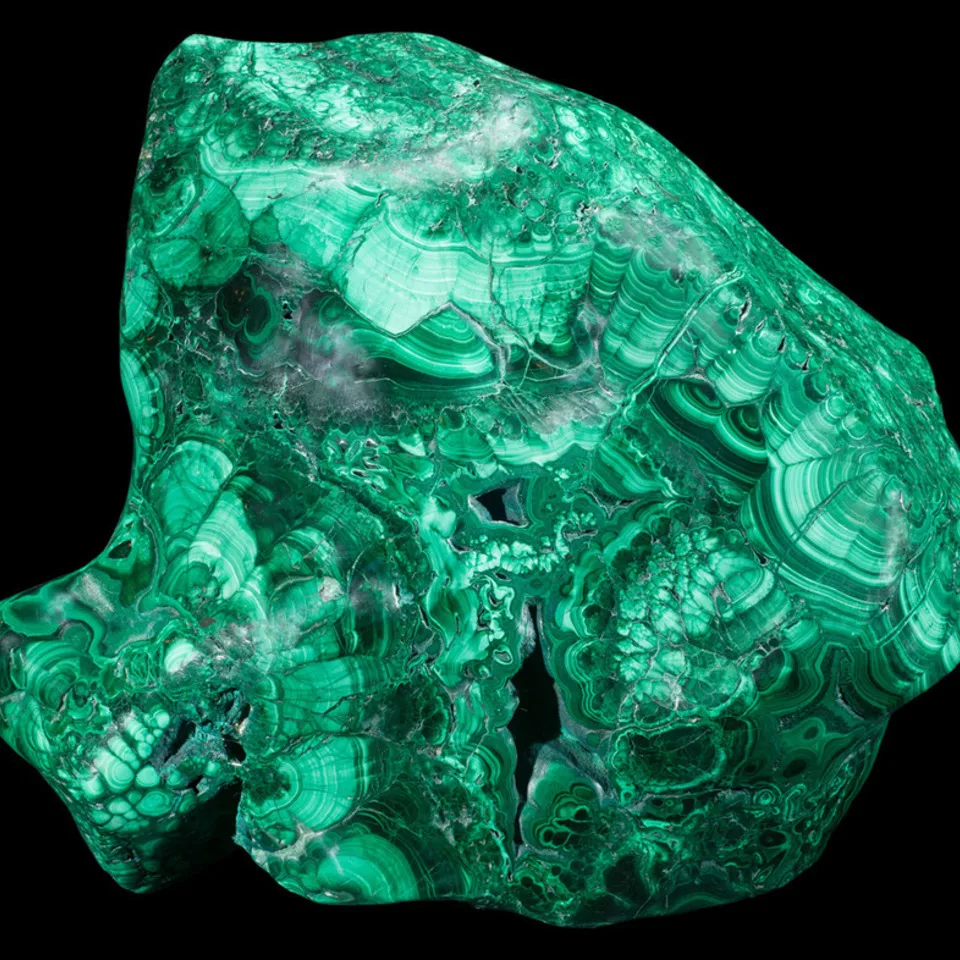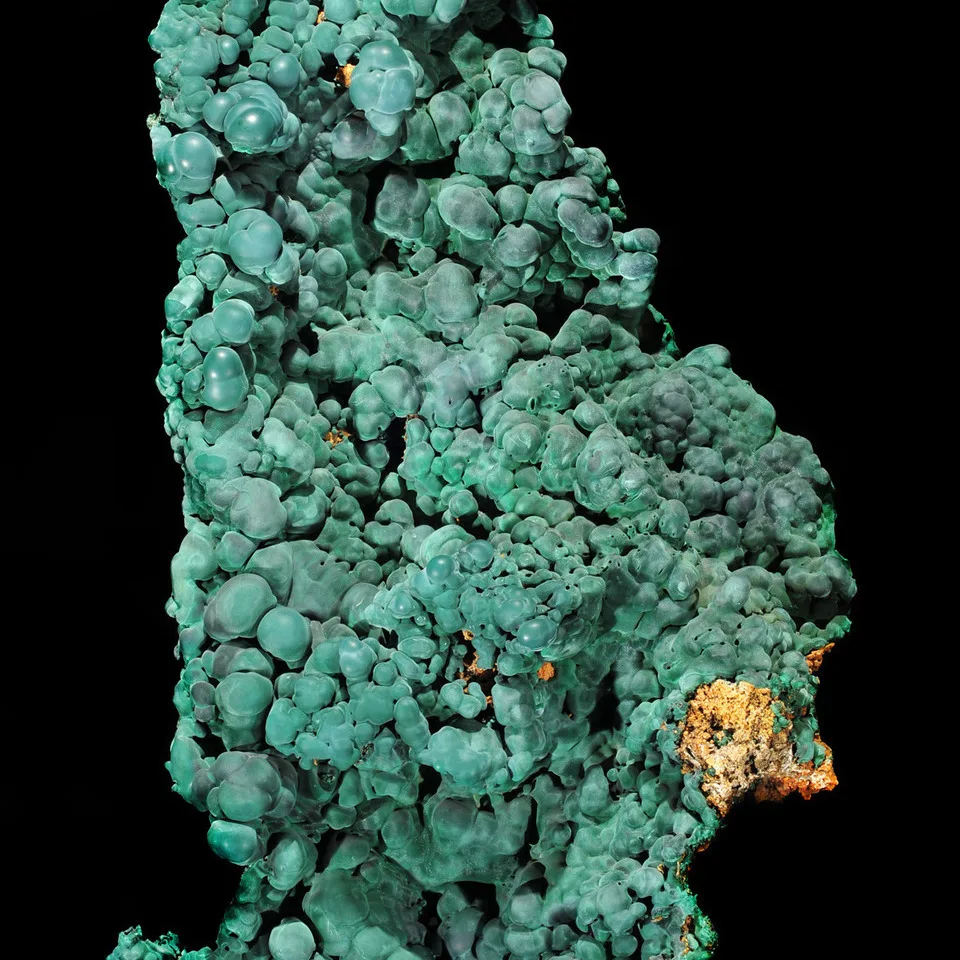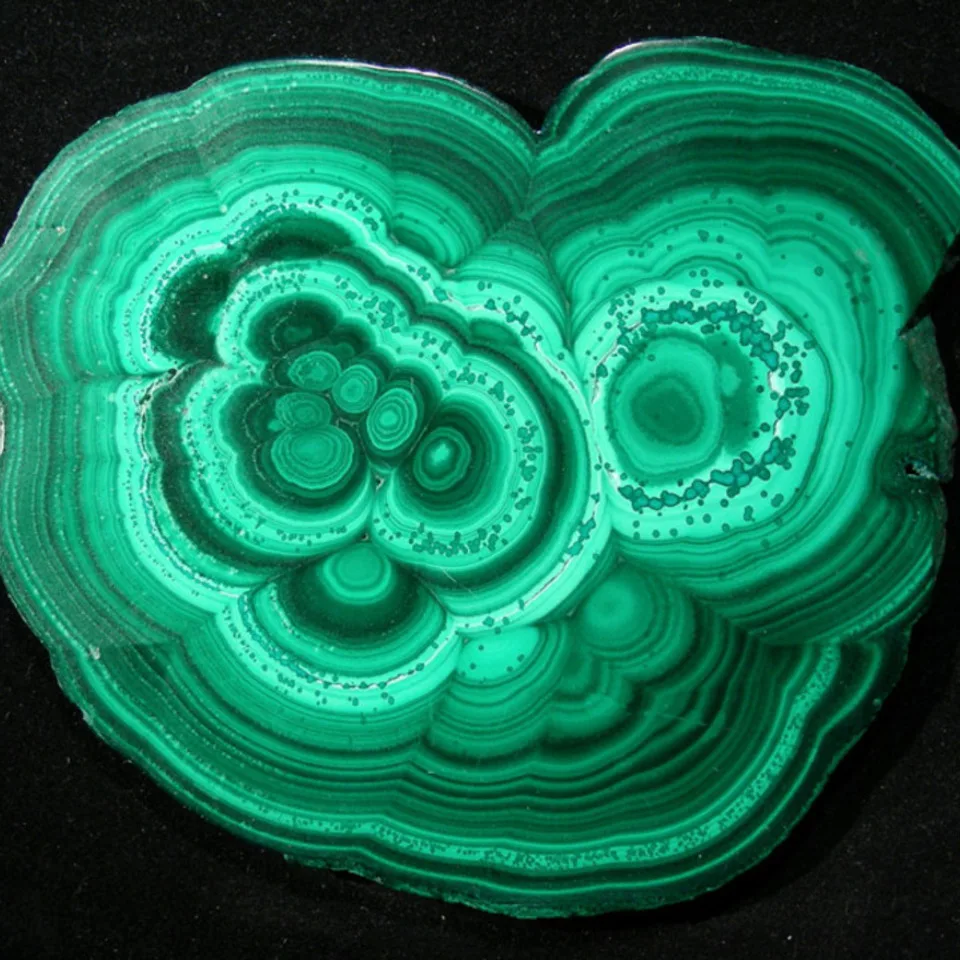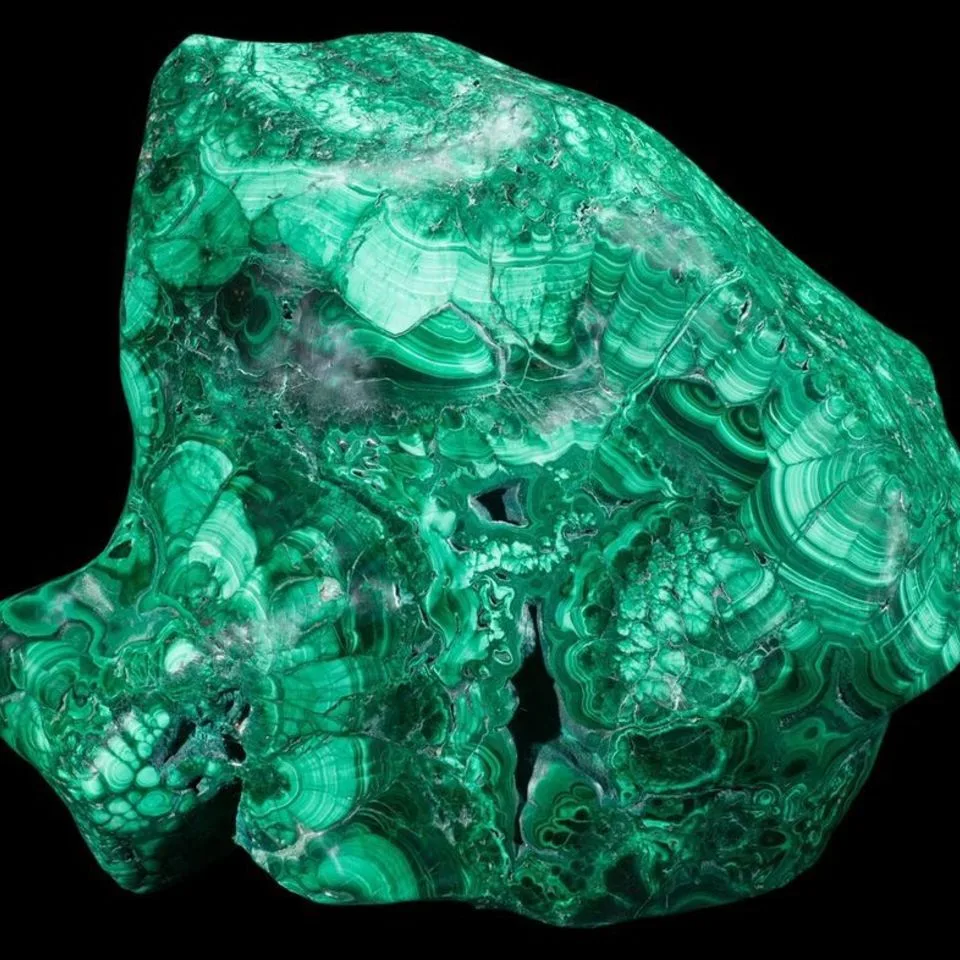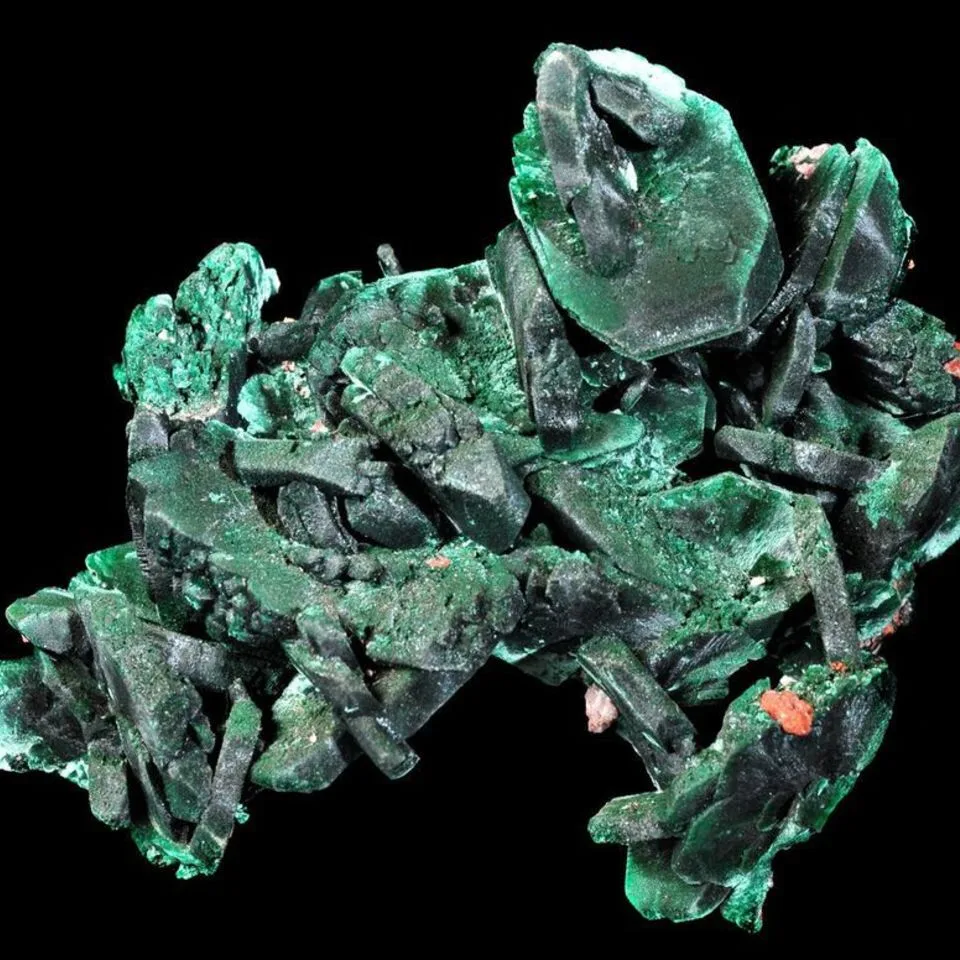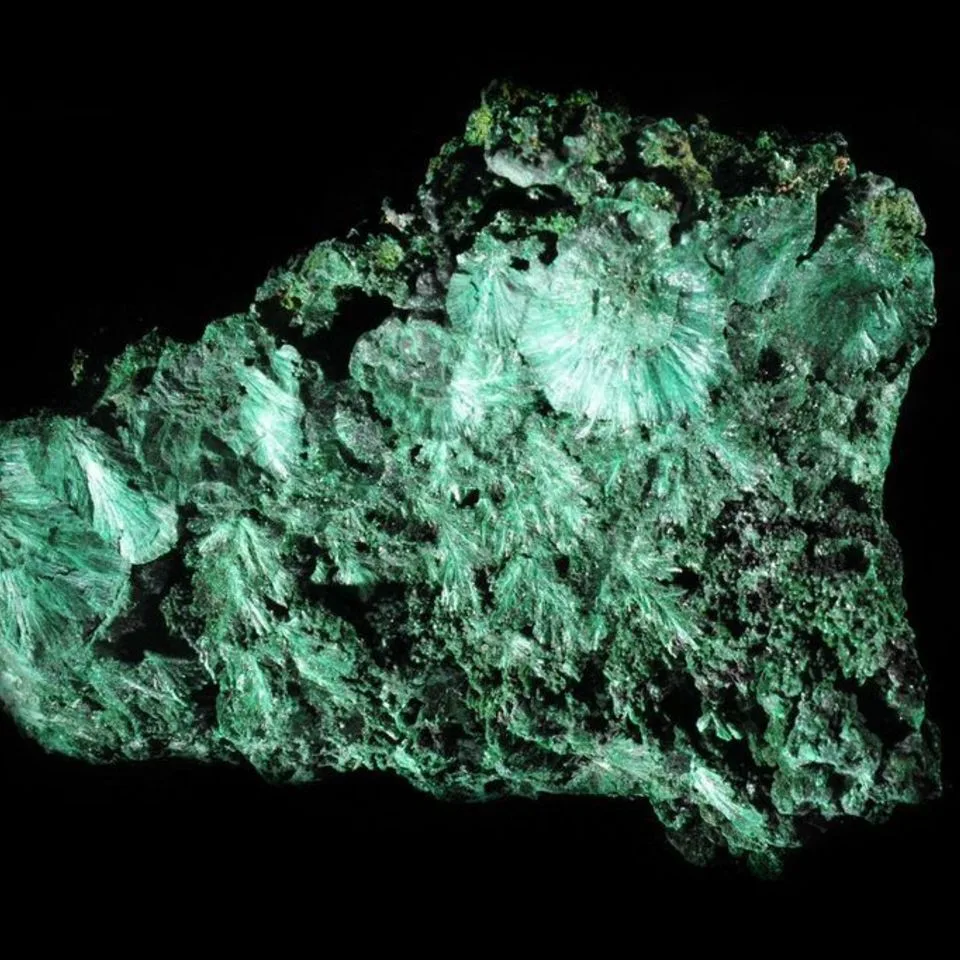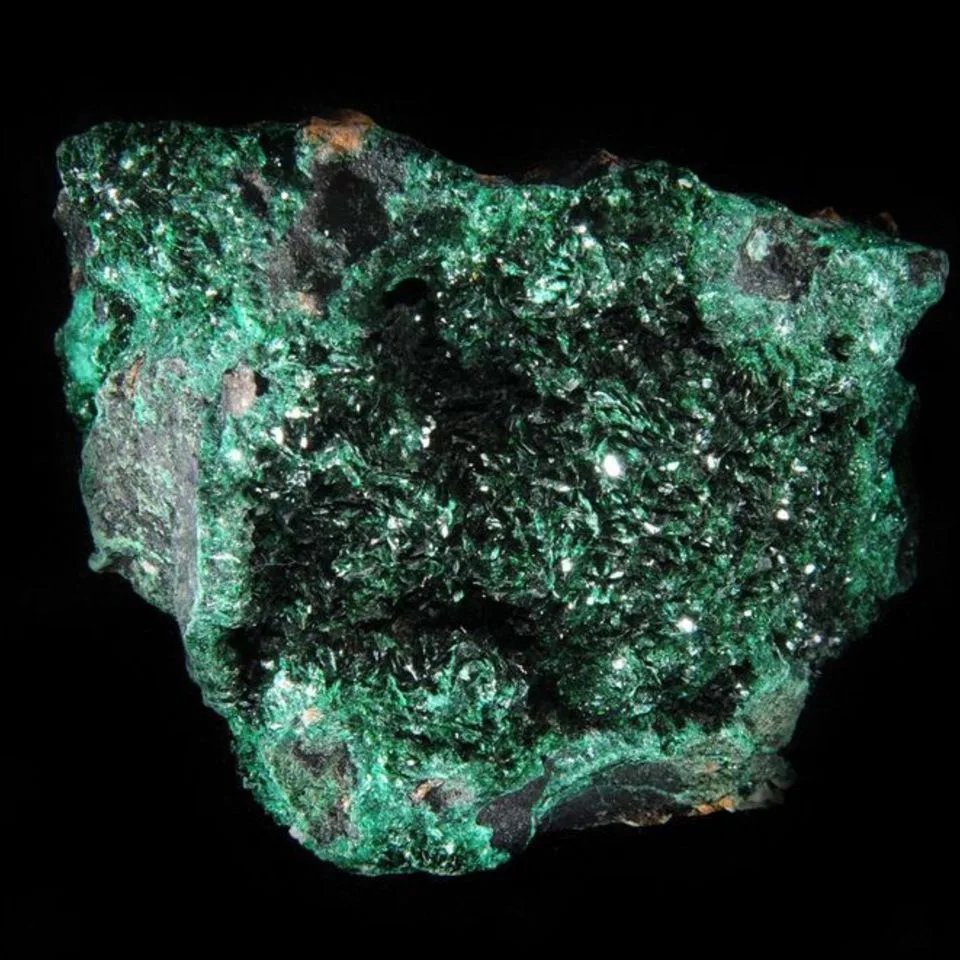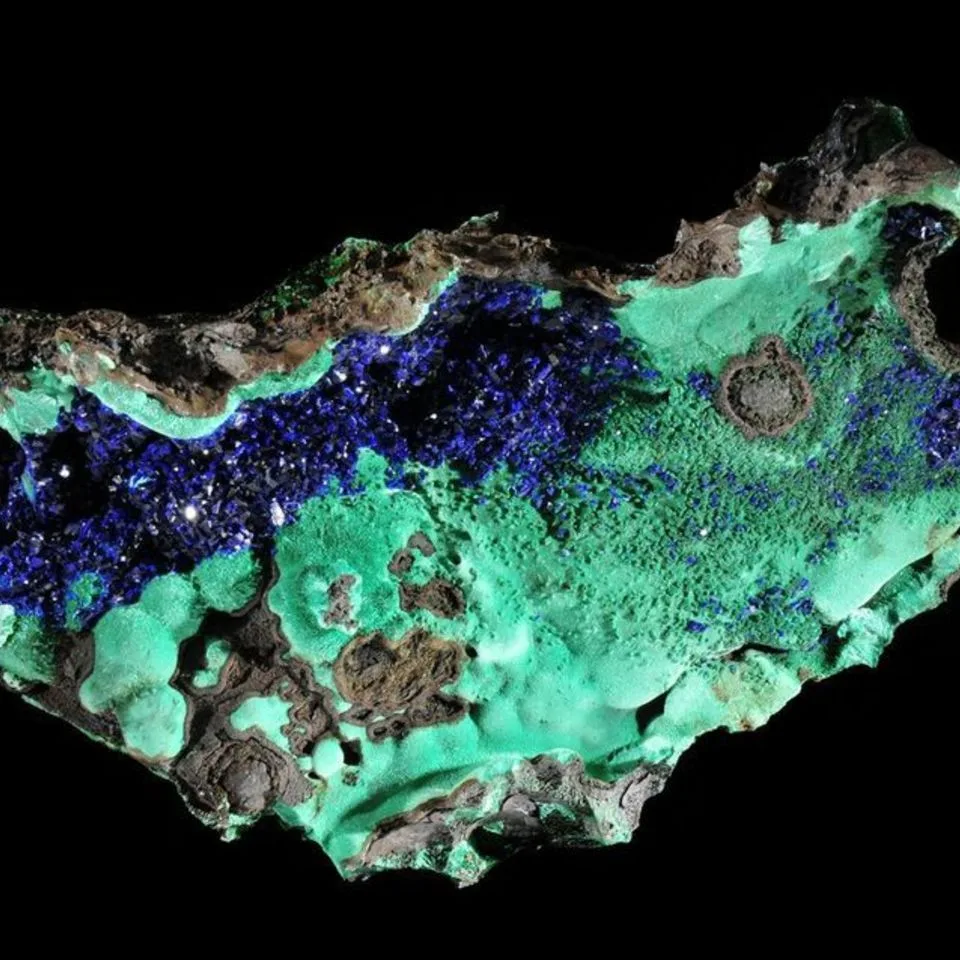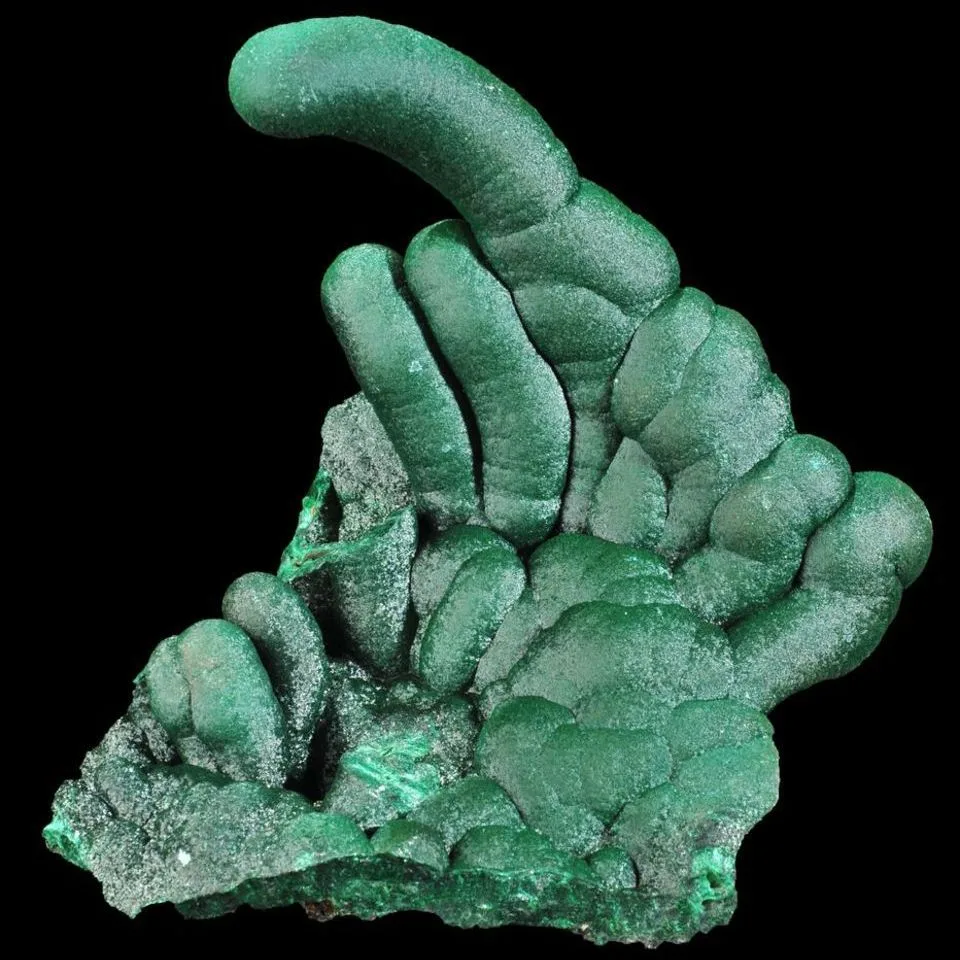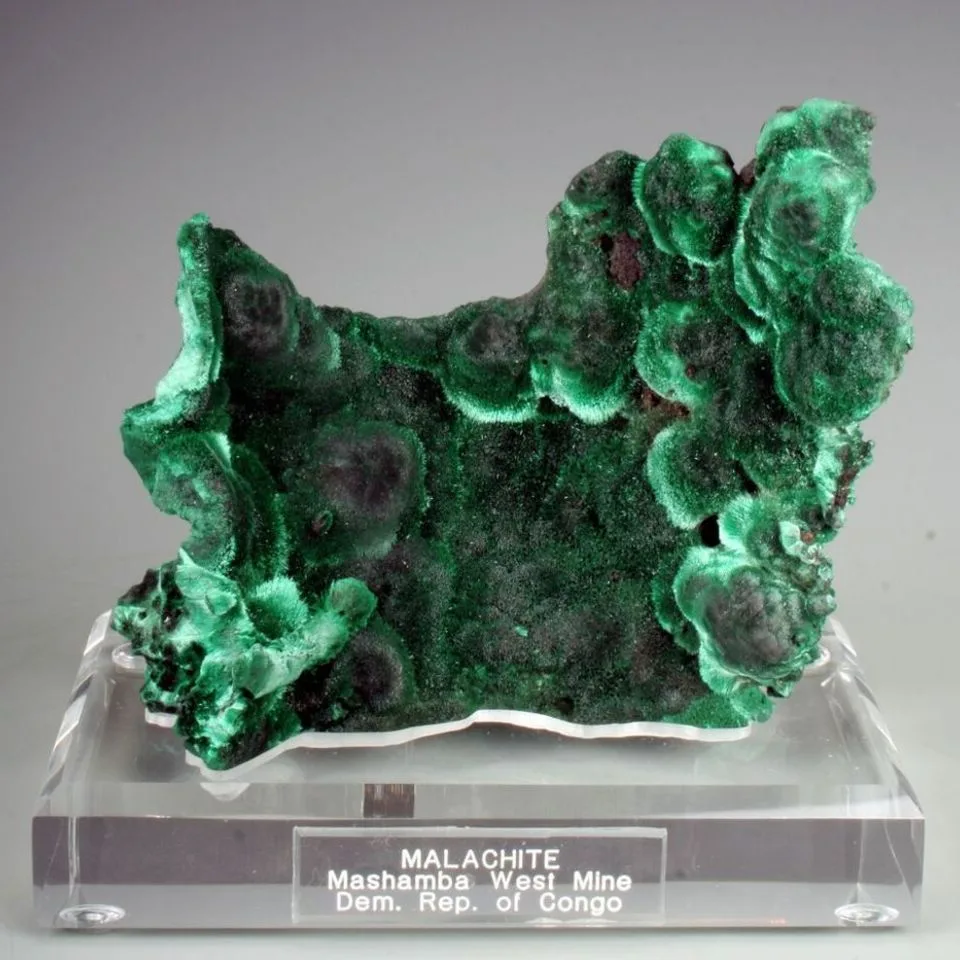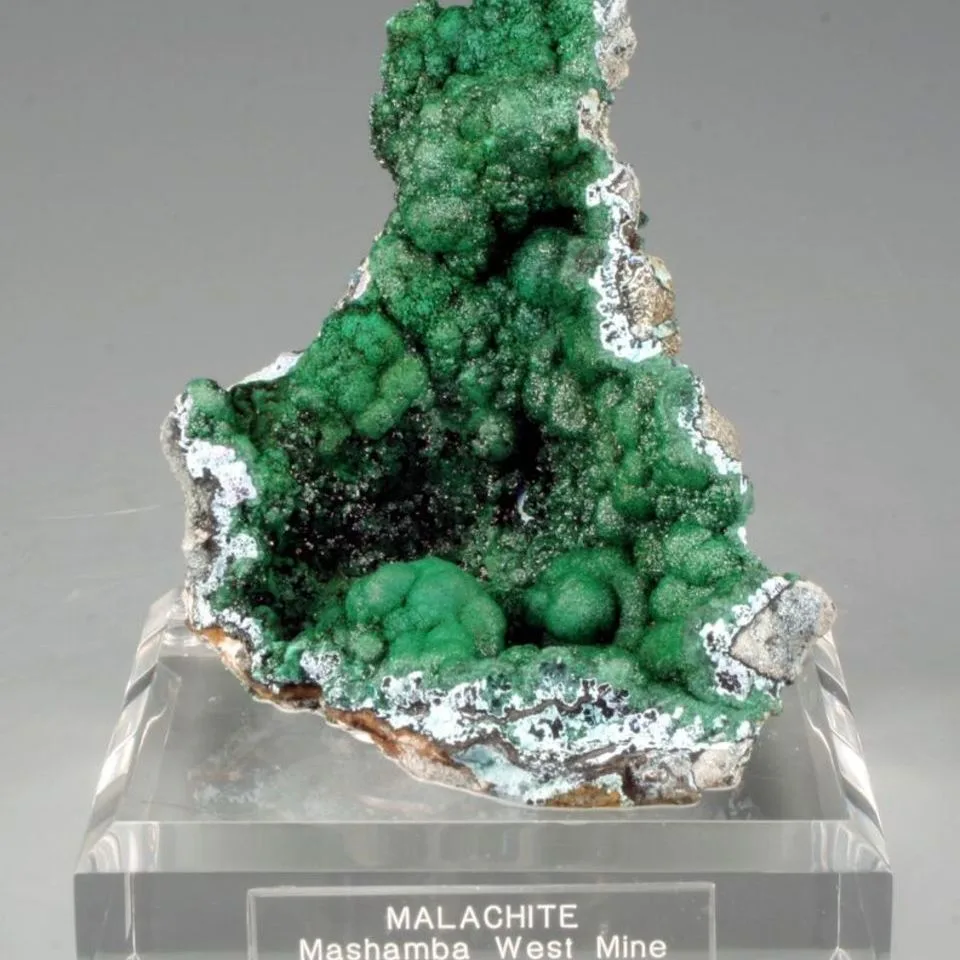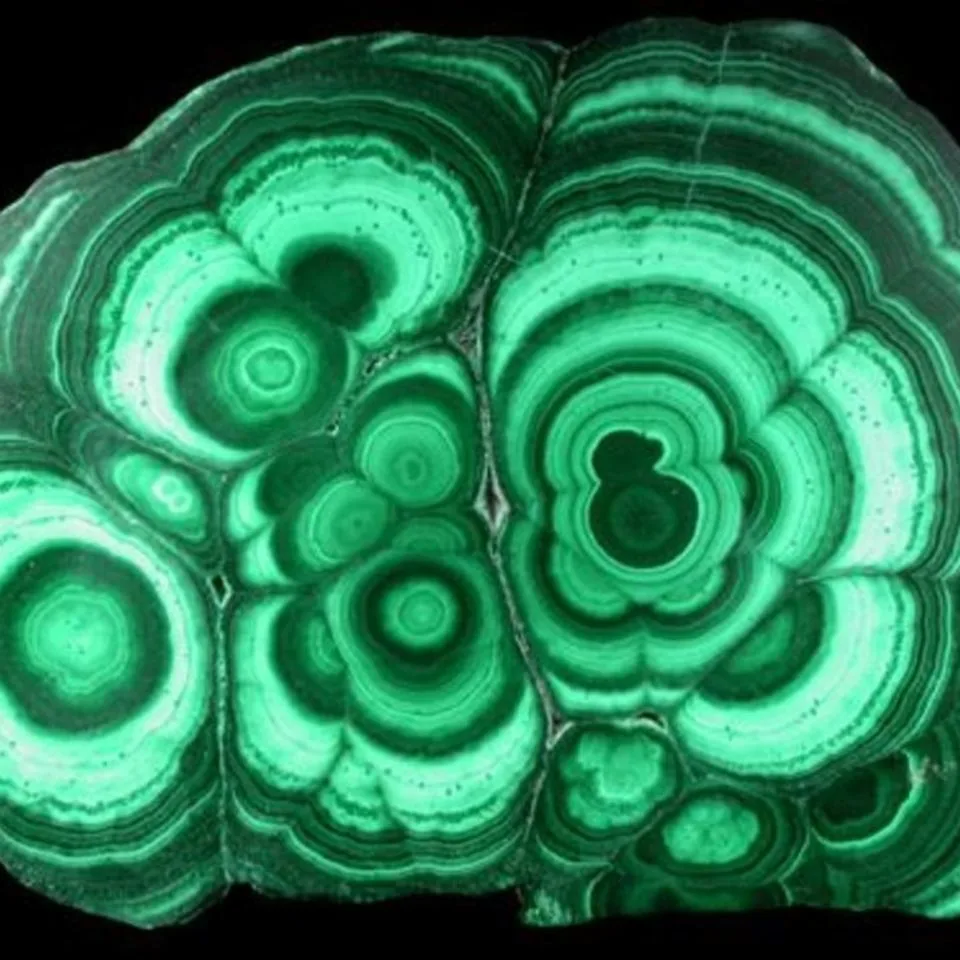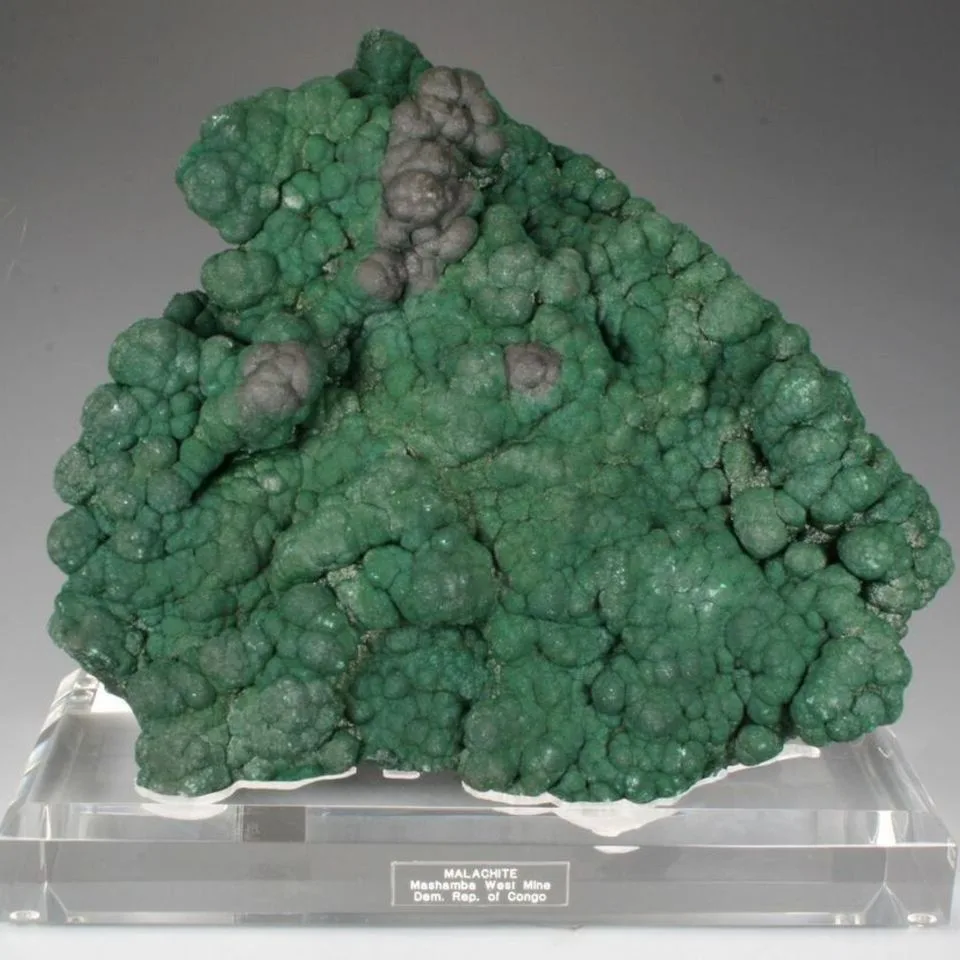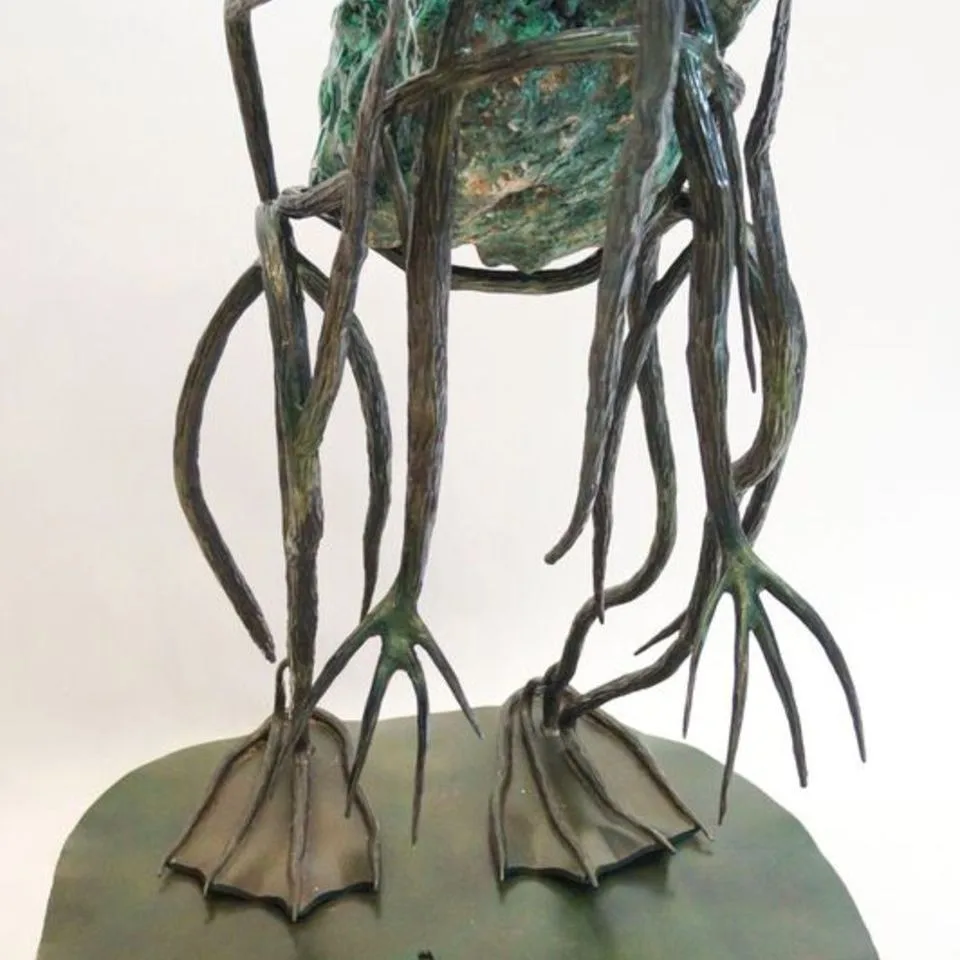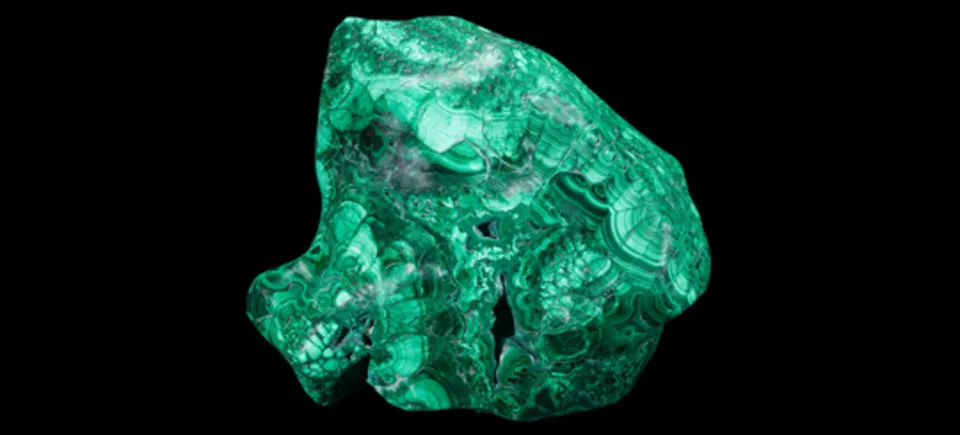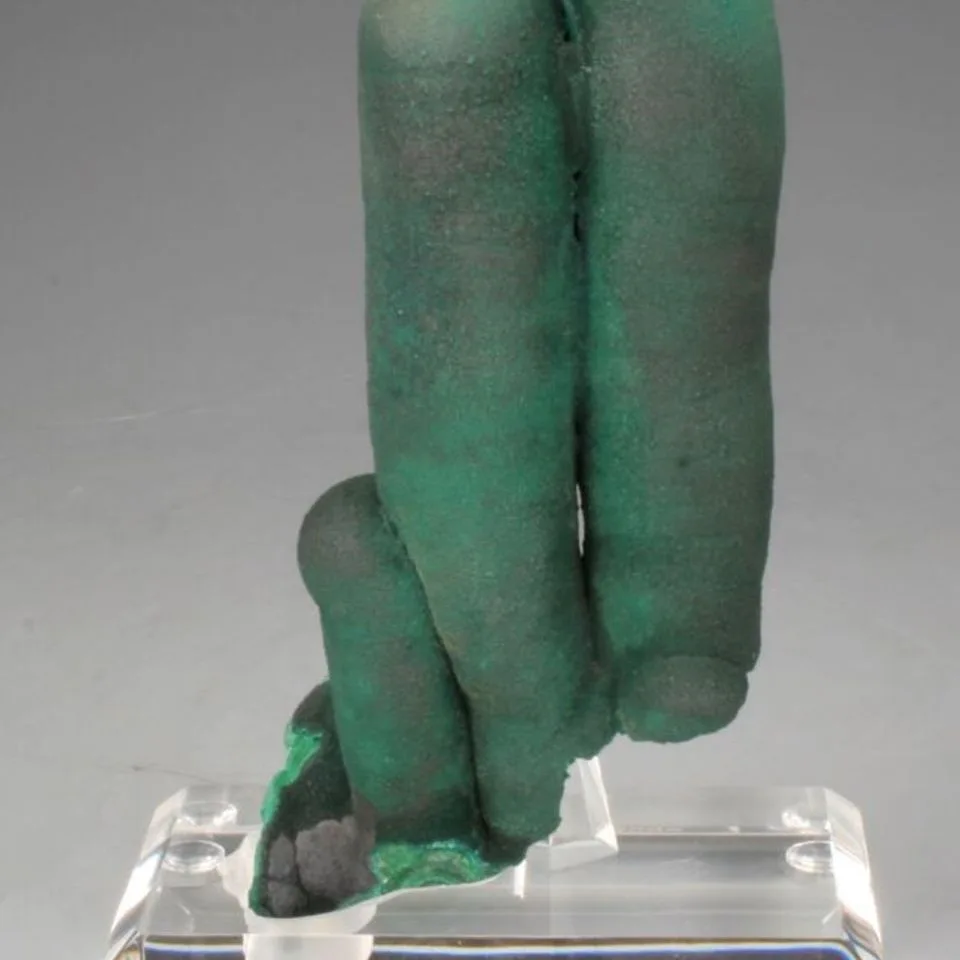Malachite
Malachite is a popular stone which has dark and light green banded areas, and these patterns give the stone its unique ornamental look unlike that of any other gemstone. Malachite is a carbonate mineral normally known as “copper carbonate.” Malachite ranges between 3.5 and 4 on the Mohs scale of hardness. Although malachite is sensitive and not very hard, if handled with care it can be very durable. This vivid green gem gets its color from the copper content in its chemical formula.
Crystals of malachite are rare, they belong to the monoclinic system of symmetry. They form commonly in kidney-shaped (botroiydal) or radiating masses. The Egyptians have been using malachite for amulets and other jewelry since 3000 AD. Often found in massive or botryoidal form, this beautiful green crystal has been used since ancient times in inlay work and in carvings of churches and cathedrals as it is found in huge boulders.
It was also used as a pigment for paint during the 15th century in Egyptian tomb paintings and much later in European art. The Victorians were also great admirers of opaque jewelry stones, and malachite was chosen to be one of their favorites, sometimes choosing it to set in gold. Malachite derives its name from the Greek word ‘mallow’, which means a green herb.
The stone is also known by its trade name the peacock stone. Malachite can be found in USSR, Zaire, Germany, France, Australia, Chile, Arizona and New Mexico/USA. Although malachite is widely distributed but they seldom occur in large quantities. Since malachite mineral is in abundant supply, you will hardly find synthetic materials in the market. There is evidence that Malachite was mined as early as 4000 B C on the Sinai Peninsula.
